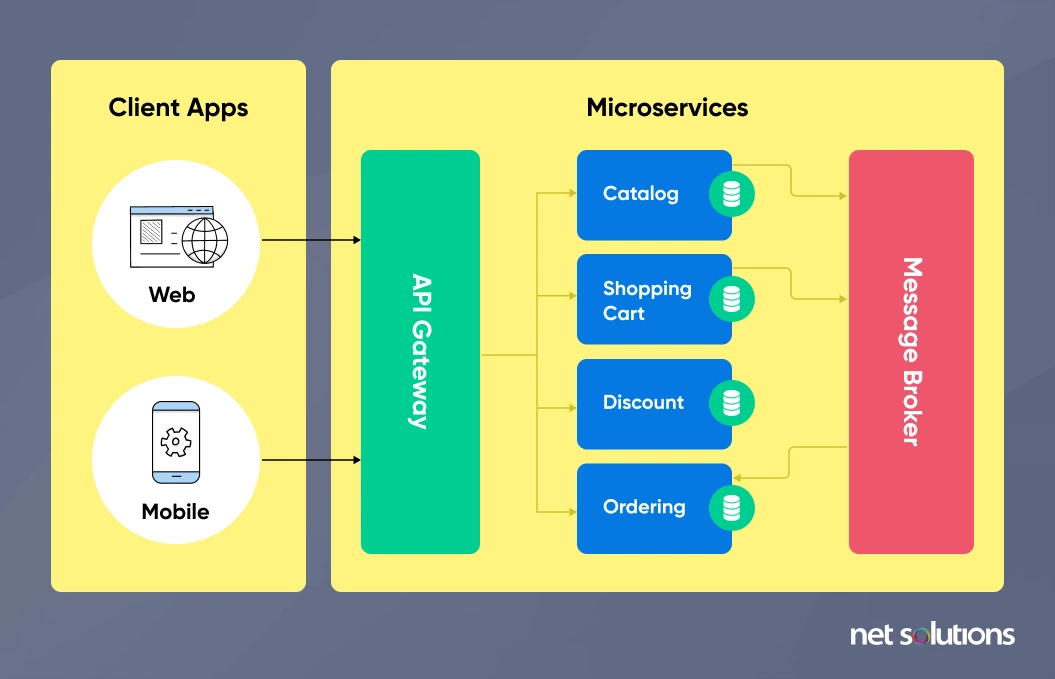Microservices: building scalable and maintainable applications

Microservices Architecture: A Comprehensive Guide for Developers
Microservices architecture has emerged as a popular approach to software design, enabling scalable, resilient, and easily maintainable applications. By breaking down applications into smaller, independently deployable services, microservices offer many advantages over monolithic architectures. In this article, we will explore what microservices are, their key benefits, challenges, and best practices for building successful microservices applications.
🧩 What Are Microservices?
Microservices are an architectural style where an application is composed of small, independent services that communicate over well-defined APIs. These services focus on specific business capabilities, allowing development teams to work on them independently.
Microservices are often contrasted with monolithic architectures, where a single, unified codebase is responsible for everything. Microservices aim to decentralize development, enabling teams to choose the most suitable technologies, scale services independently, and quickly adapt to changes in the business.
📚 For more in-depth insights, check out this article from Martin Fowler: Microservices.
🚀 Benefits of Microservices
Microservices offer several benefits that make them an attractive choice for modern application development:
- ✅ Scalability: Each microservice can be scaled independently, enabling better resource utilization.
- ✅ Flexibility: Teams can develop, deploy, and scale microservices independently, which improves agility and time-to-market.
- ✅ Resilience: Microservices can be isolated, meaning that a failure in one service does not bring down the entire application.
- ✅ Technology Agnostic: Teams can choose the most appropriate technology stack for each microservice.
To read more about the advantages of microservices, visit Red Hat: What are Microservices?.
📉 Challenges of Microservices
Despite the numerous benefits, microservices also come with several challenges:
- ⚠️ Increased Complexity: Managing multiple services, ensuring communication between them, and maintaining data consistency can be difficult.
- ⚠️ Distributed Systems: With microservices, you need to deal with distributed system issues such as network latency, service discovery, and fault tolerance.
- ⚠️ Data Management: Ensuring consistency across various microservices can be complex, especially when dealing with transactional data.
- ⚠️ Deployment Overhead: Microservices require more sophisticated CI/CD pipelines and automated deployment processes.
🔄 Microservices vs Monolithic Architecture
In a monolithic architecture, all components of an application are tightly integrated into a single unit. While monolithic applications are easier to develop in the early stages, they can become difficult to maintain as the application grows. Microservices, on the other hand, allow applications to be broken down into smaller, more manageable pieces, which can be developed, deployed, and scaled independently.
💡 Best Practices for Building Microservices
To ensure the success of a microservices-based application, consider the following best practices:
- ✅ Domain-Driven Design: Organize your microservices based on business domains to ensure clear ownership and focus.
- ✅ Automated Testing: Each microservice should be thoroughly tested with unit tests, integration tests, and end-to-end tests.
- ✅ API Gateway: Use an API Gateway to handle inter-service communication, routing, and security, simplifying the overall architecture.
- ✅ Continuous Integration/Continuous Deployment (CI/CD): Automate the deployment process to ensure quick, error-free releases of microservices.
🏢 Real-World Examples of Microservices
Many companies have successfully implemented microservices architecture to improve scalability and flexibility. Here are some examples:
- 🌍 Netflix: Netflix migrated to microservices to manage its large-scale video streaming platform, ensuring scalability and flexibility.
- 🛒 Amazon: Amazon transitioned to microservices to handle its massive e-commerce infrastructure, allowing better resource management and improved performance.
- 🚗 Uber: Uber adopted microservices to handle its real-time ridesharing platform, enabling faster feature deployment and service isolation.
To learn more about these case studies, visit CIO: 10 Companies That Nailed Microservices.
🎯 Conclusion
Microservices architecture provides immense flexibility, scalability, and resilience, making it an excellent choice for modern application development. However, it requires careful planning and management, especially when dealing with complexity, data consistency, and inter-service communication. By following best practices and learning from real-world examples, organizations can successfully implement microservices and reap the benefits of this powerful architecture.
For further reading on microservices, explore this Red Hat Overview of Microservices.
